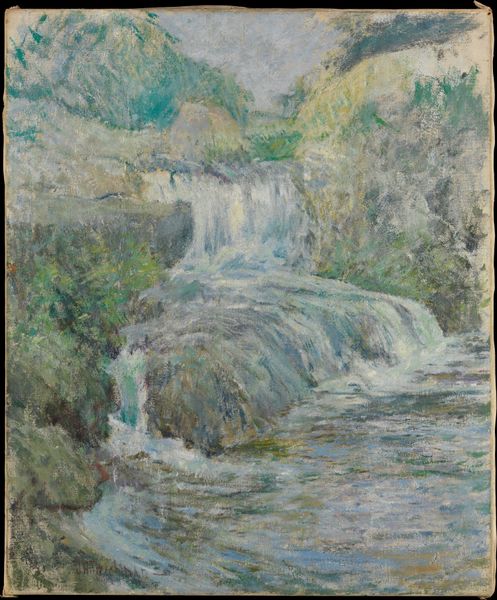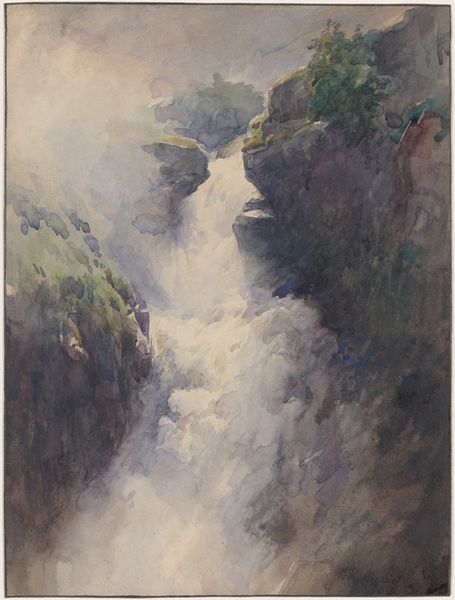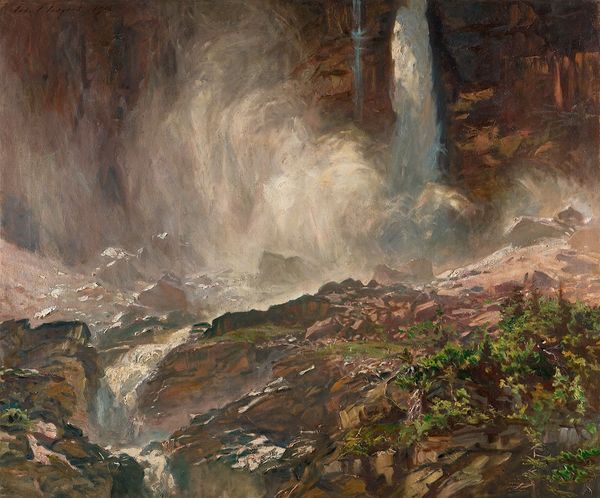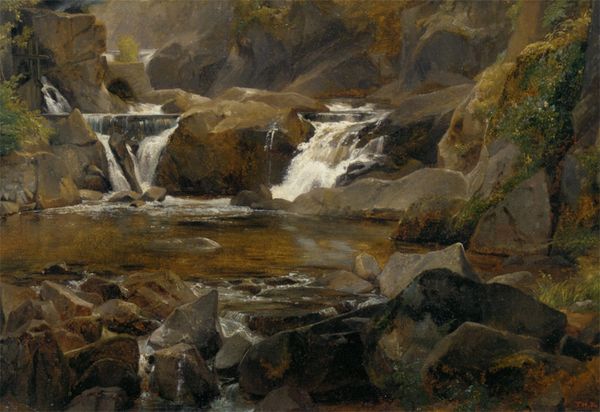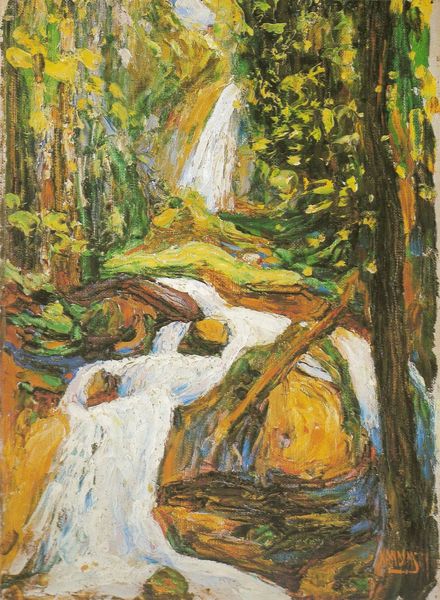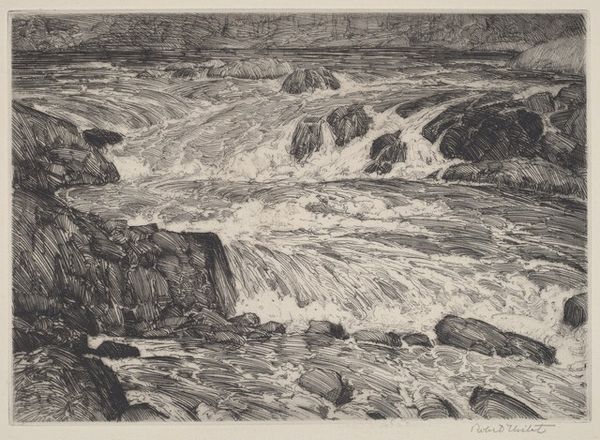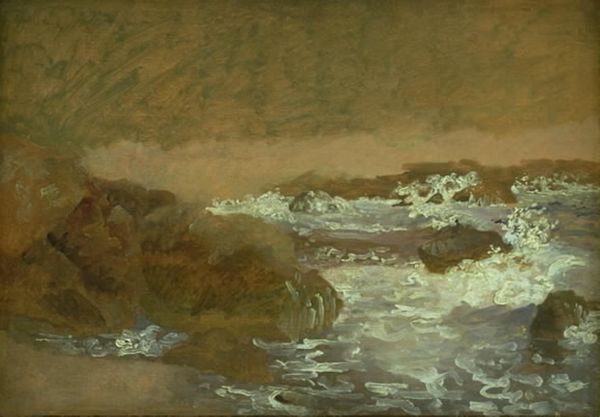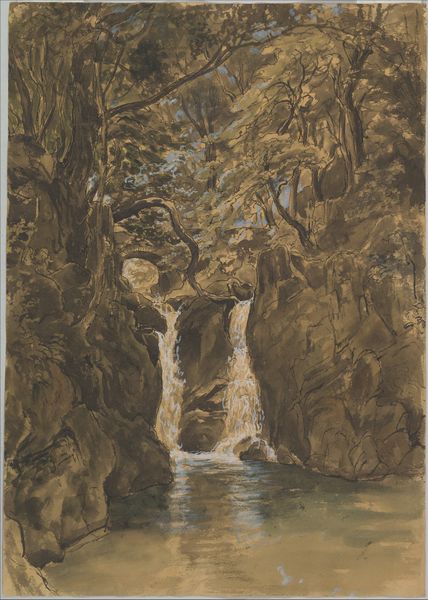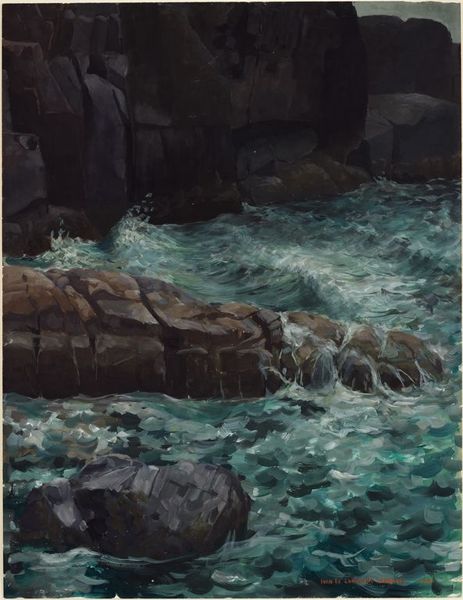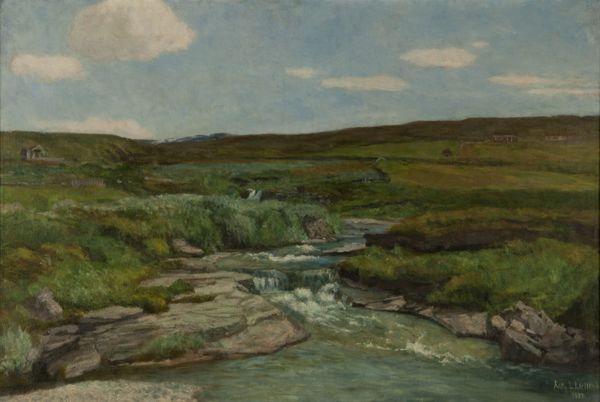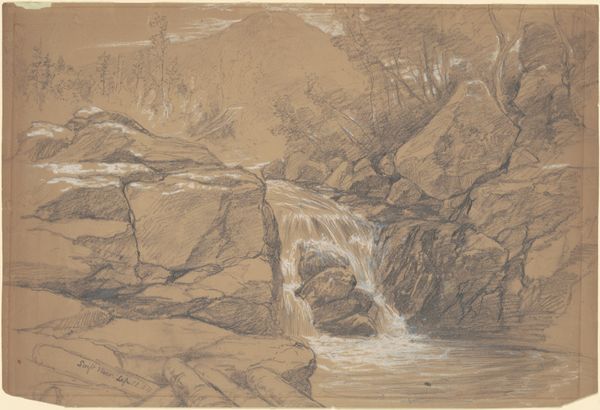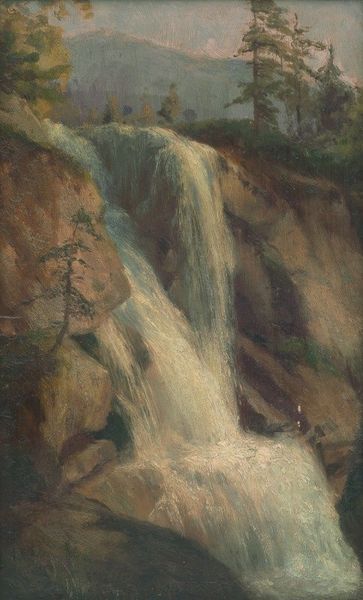
Dimensions: 30 x 25 in. (76.2 x 63.5 cm)
Copyright: Public Domain
Editor: So, here we have John Henry Twachtman’s “Horseneck Falls,” likely painted between 1886 and 1900. It’s an oil on canvas, and I’m immediately struck by how the composition focuses on the movement of water, but it's almost muted. What do you see in this piece? Curator: I observe first the emphasis on materiality through the artist's technique. Note how Twachtman employs short, broken brushstrokes, building up layers of paint. The texture itself becomes a dominant feature, nearly overshadowing the representational aspect of the waterfall. The chromatic restraint is also significant, moving toward a near monochromatic scheme. Editor: It does seem almost unfinished, doesn't it? Was that intentional? Curator: I'd say it prioritizes the process of seeing over photographic representation. Consider how the composition itself directs our gaze: the cascade unfolds through a series of carefully balanced forms, guiding us from the foreground rocks towards the hazy background, constructing a dynamic tension between the solid and the fluid. The structural relationships suggest an understanding of Japanese prints, playing with asymmetrical arrangements to draw the eye. Do you see how the work's stillness evokes movement? Editor: I see that now. The way the composition leads you through, even with the muted color palette. The texture also creates movement! It's like he is less concerned with what the waterfall *is* than how it functions visually. Curator: Precisely. It presents us with a carefully constructed orchestration of visual elements that engages with notions of form, space, and the inherent qualities of the medium itself. Editor: That’s really changed how I see it. I was too caught up in the subject matter initially. Now I'm struck by the art itself. Curator: It's a potent reminder that art, at its core, concerns the intrinsic language of visual form.
Comments
No comments
Be the first to comment and join the conversation on the ultimate creative platform.
